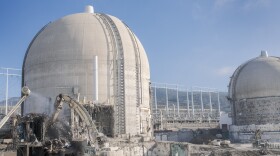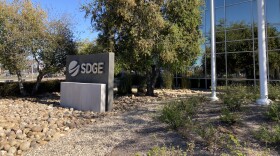City Heights is now home to a federal program that gives tax breaks for building in economically distressed areas, but some residents fear it will lead to increased housing costs.
San Diego has 35 census tracts designated as "opportunity zones" by the U.S. Department of Treasury because of their poverty, business activity and geographic diversity. Investors who build in opportunity zones get a tax discount after five or seven years and ultimately pay no taxes on capital gains after 10 years.
Steve Glickman, a former Obama administration economic adviser and architect of the opportunity zone program, recently visited City Heights to explain how it works.
"A really simple example: you have a million dollars that you made in the stock market and you take that million dollars, roll it into these funds and rather than paying taxes next year, you don't pay taxes until 2027," he said. "In the meantime, you can take that million dollars and you can invest it in something new like an affordable housing project and whatever profits you make on that project, as long as you've held that investment for 10 years or more, are now tax-free."
The policy is purposely written broadly, so there is no restriction on what investors can develop.
But the lack of restrictions is something that critics of the program worry about. Erik Tilkemeier from the City Heights Community Development Corporation worries it could lead to gentrification.
"You look at the legislation, it's designed to bring outside capital into under-invested communities, so it's a perfect recipe for gentrification and displacement," he said. He worries that longtime City Heights residents will get priced out of their communities.
A recent study by Zillow Economic Research says home sales in areas that received opportunity zone designations increased 20 percent year over year compared to single-digit growth in areas that met opportunity zone qualifications but didn't receive the designation.

Luis Ojeda from the city of San Diego's Economic Development Department said gentrification is an issue the city is tracking.
"We have to think about those issues, set up policies that incentivize and promote the ones that are doing the potential positive outcomes, such as increasing jobs, creating affordable housing and low-income housing," he said.
The city currently has no way of tracking opportunity investors. They are working on developing an online portal that will show investors federal and state incentives, which is meant to help them invest in economically distressed communities in a positive way.
Opportunity zones can be transformative, but the investments must be handled carefully, said Sasha Favelukis, the co-founder of CoPlace, a company that activates underutilized real estate in opportunity zones.
"It also has the ability to be done wrong," he said. "When paper money goes into economically distressed areas, there's a process to it and you have to really involve a community and give, in order for the community to be supportive. And a lot of these areas aren't ready to be built."
Right now CoPlace is converting a 7,000 square foot lot in City Heights. The property is zoned for 10 one-bedroom, 600-square-foot apartments, but because the cost to build is so high, Favelukis said he'd have to rent the units for $1,800 a month.
"If I were to build those units, I don't know who would live there, who could afford to live in them based on the cost of living," he said.
Glickman, the creator of the opportunity zones program, said rising housing prices are a tradeoff for investments cities might have never had otherwise.
"For most places, their biggest trigger for displacement is too little investment, not too much," he said. "It's the fact that people have to leave to find jobs and build businesses and find a vibrant place to live in."







